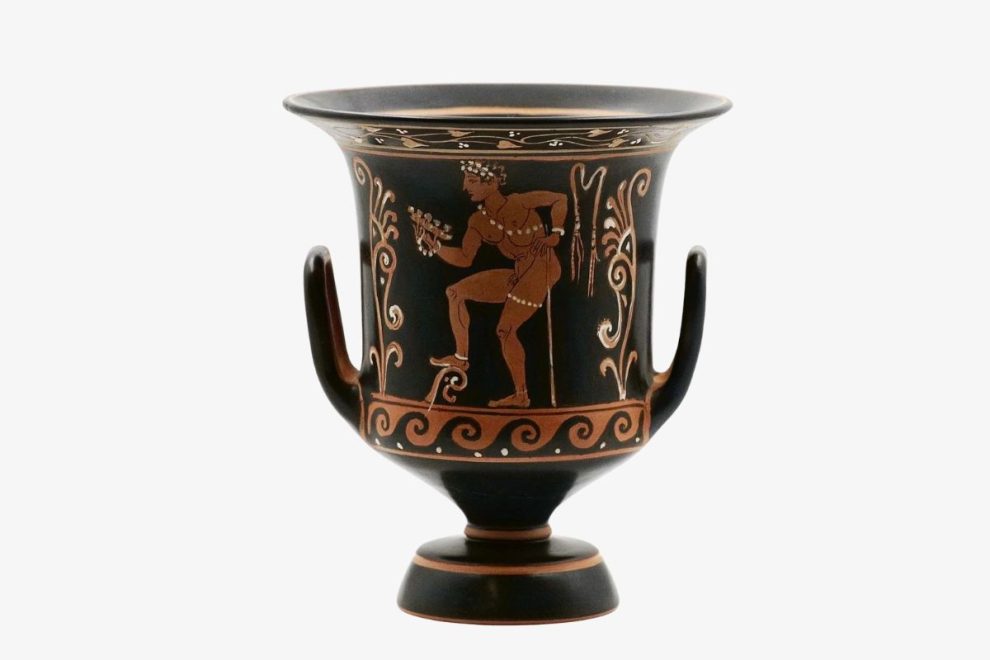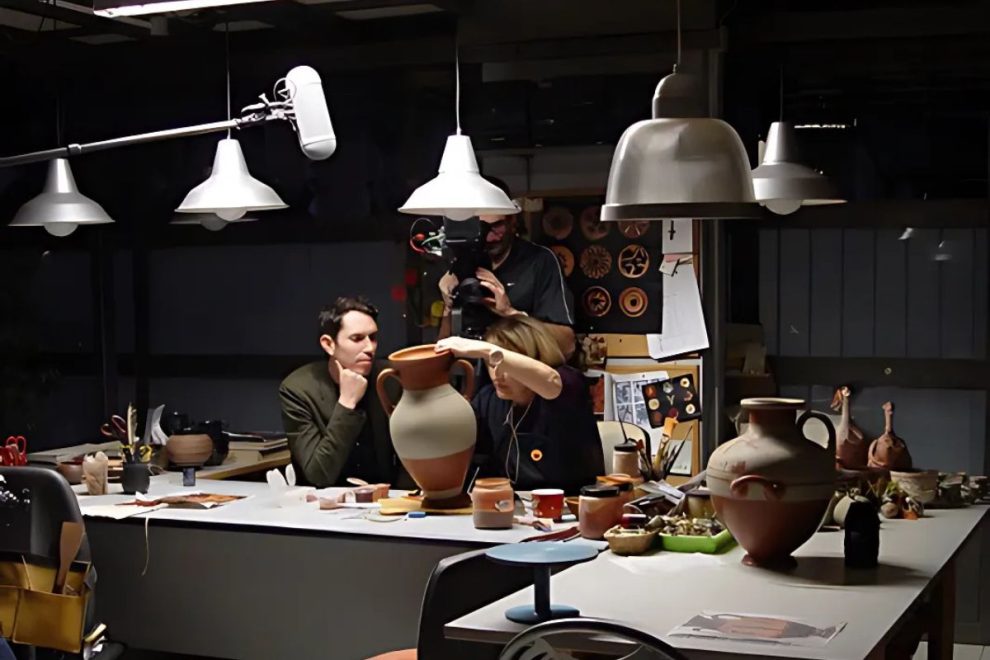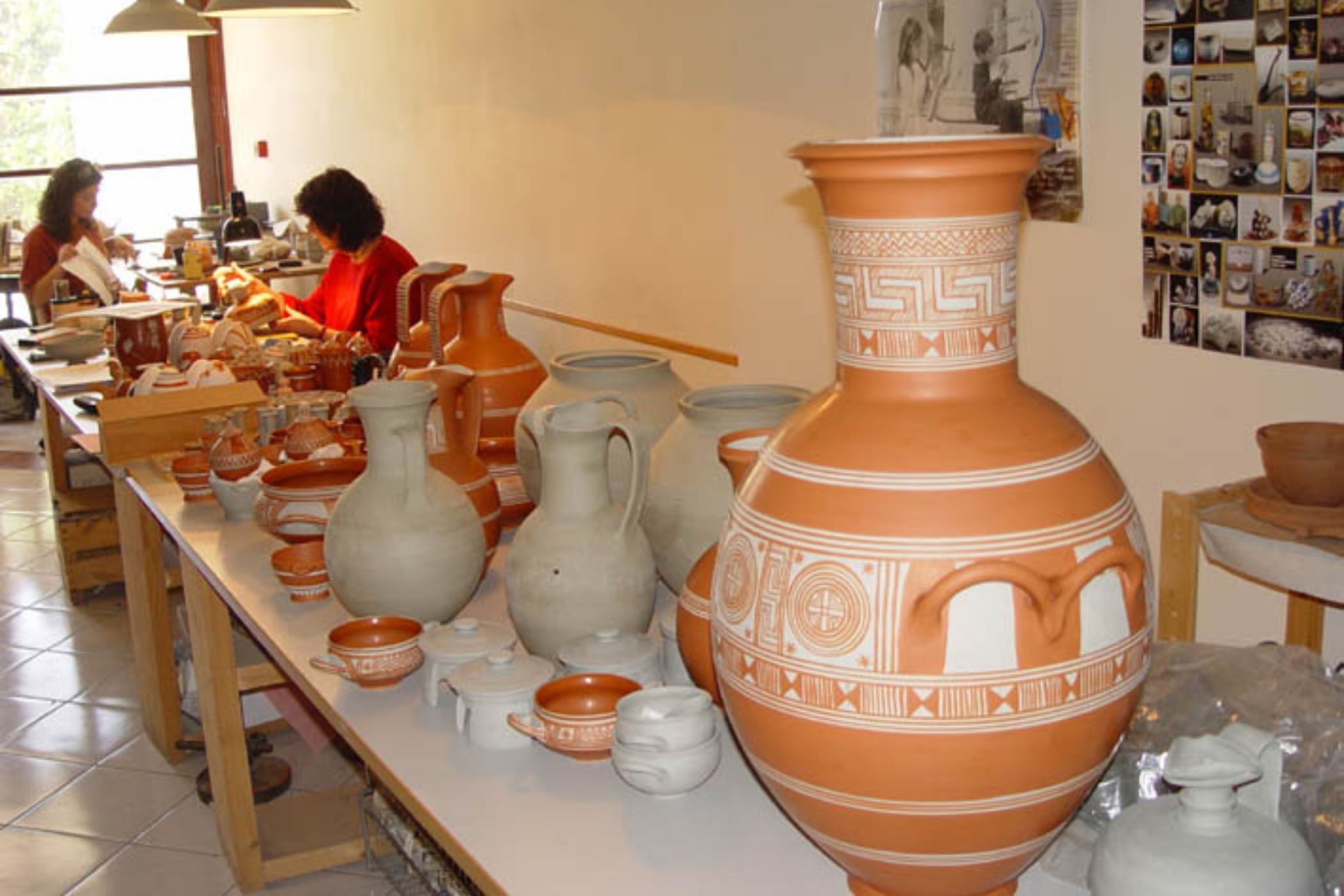
Key Highlights
- Trace the progression of ancient Greek pottery, beginning with Minoan pottery and spanning to the Hellenistic period, showcasing centuries of artistic evolution.
- Explore the distinct vessel shapes like amphorae, kraters, and kylix while understanding their specific uses in the ancient world.
- Learn about breakthrough techniques such as black-figure and red-figure vase painting that revolutionized vase painting.
- Enjoy the craftsmanship of renowned potters like Exekias and Euphronios, whose legacies persist in Greek art.
- Discover celebrated pieces like the Dipylon Amphora and the François Vase, invaluable windows into ancient Greek pottery types and Greek pottery history.
- Understand the multifaceted roles these vessels played in ritual occasions, daily living, and funerary practices across Greek society.
The Origins of Ancient Greek Pottery
The story of Greek pottery history goes back to Minoan pottery. This was the start of fine craft in the old Aegean area. People used to make these pots with designs inspired by things in nature, like spirals and flowers. It shows the new ideas and skills of that time mixed with historical fact. As time went on, ancient Greece grew. The potters there took ideas from Minoan pottery and made them part of their own style. They changed and added to these old ways, which helped new styles grow. These early steps made vase painting important in the ancient world and brought out how good and useful Greek vase art could be. This work helped shape what many people now think of when they talk about Greek pottery, Greek vase painting, and its place in ancient history.
Early Techniques and Materials
Making ancient Greek pots started with picking the right clay. They liked to use Attic clay because it had a lot of iron in it. This gave many Greek vase shapes their bright orange-red color. In other spots, the clay was mixed with seashells, making it look yellow-green. Potters got the clay ready and shaped it using a potter’s wheel. They often used metal vessels like silver cups as ideas for their pots. This way, potters could be exact with their shapes and make new styles.
When they needed to add handles or other parts, they used slip, which is a soft clay liquid, to hold things together. When the pots were almost done, potters added more details. Some vases were covered with black slip to make them stand out more. That’s how black-figure pottery was made—the potters scratched designs into the coating. These steps show how clever people were in the past and how important Greek pottery history is to us.
Archaeological Discoveries and Rediscovery
Excavations have brought up thousands of ancient Greek pots. This happened because earlier people who were looking for treasure wanted gold and silver, not pots. These archaeological discoveries in graves and tombs kept both beautiful and useful objects safe. We can now look at these finds to learn more about ancient Greece and the ancient world. With the use of modern tools, including ones mentioned in the World History Encyclopedia, we see small details in these ancient Greek pots. This new technology lets us learn about unsigned artists. They were the ones who made these pottery pieces.
Potter workshops kept working to suit trade needs, and this shows how much these pieces mattered in their communities and far beyond. Today, important groups—like Cambridge University Press—put out books and ideas about these old things. We now have famous items to look at, such as funerary vases like the Dipylon Amphora. Because of these works, we understand more about the themes, uses, and social links in the pottery of ancient Greece. Studying them helps us know much more about the people and stories from the ancient world.
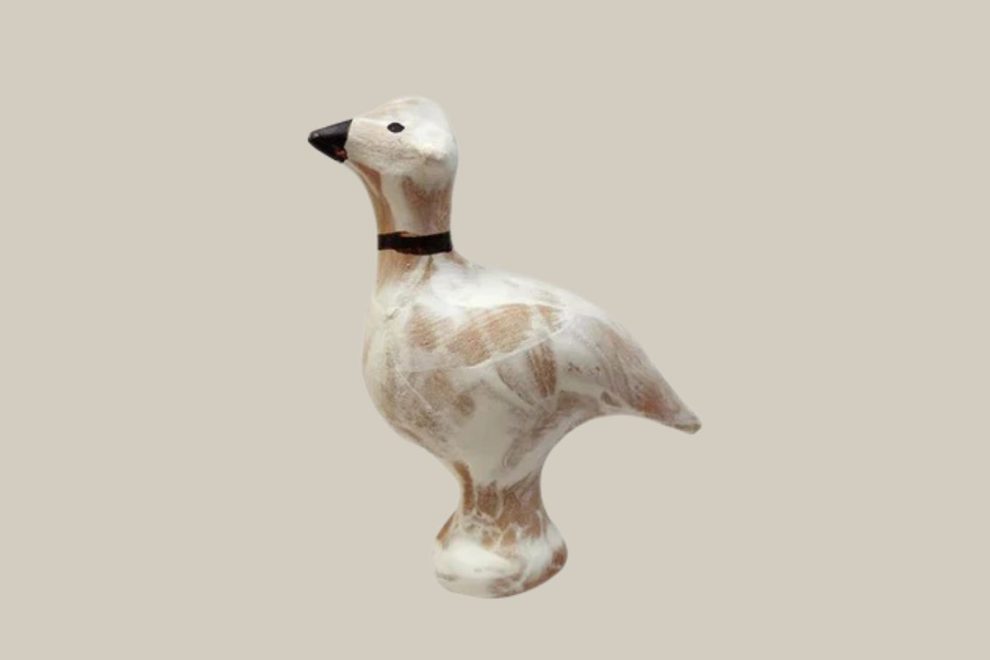
The Role of Pottery in Ancient Greek Society
Ancient Greek pottery was more than a basic tool. It showed what Greek society cared about, and what people there felt was beautiful. People used these pots and jars for many things. Some were painted with detail and used on ritual occasions. Others were simple, for daily use at home. These artifacts are a key part of the ancient world. They show us about daily habits, traditions, beliefs, and art. Some were used as grave markers to honor the dead. Some were used to store goods or to drink from at symposia. Ancient Greek pottery linked people’s daily lives with the bigger traditions of Greek society. You can see its importance in every piece that people made by hand.
Everyday Uses and Functions
In ancient Greece, pottery was used everywhere. You could find it at home, in open places, and used for trade. Here are some ways people used pottery each day:
- Olive oil storage: Jars helped keep olive oil and nice smells fresh for a long time.
- Transport vessels: Big pots called amphorae let people carry things like wine over long trips, because they were strong.
- Greek symposium drinking cups: Kylix cups brought a touch of fun and style when people got together for a greek symposium.
- Broad categories of household use: People cooked with pots and also used beautiful ones for show.
There was more to these pots than just use. They also showed what life was like in Greek society. Art on the jars often told what the jar was for. You could see flowers on oil jars or fun party pictures on drinking cups. The way they worked and looked turned simple pots into lasting treasures from the ancient world.
Religious and Funerary Significance
Pottery played a big role in the lives of people in the ancient world. It was important in religious rituals and funeral customs. Grave markers, often large vases, showed symbols and were set up as a way to remember the dead. Large vessels, which were used for pouring drinks in ceremonies, often had animal motifs and wide designs. These ritual occasions showed how spiritual Greek society was. Also, the large areas of the vase let artists tell stories about the afterlife or gods. Funeral items, particularly lekythoi, held oils for these events and showed pictures about loss. The skill and meaning in these items show how Greek pottery brought together art, faith, and memories. This is why Greek pottery history is so respected.
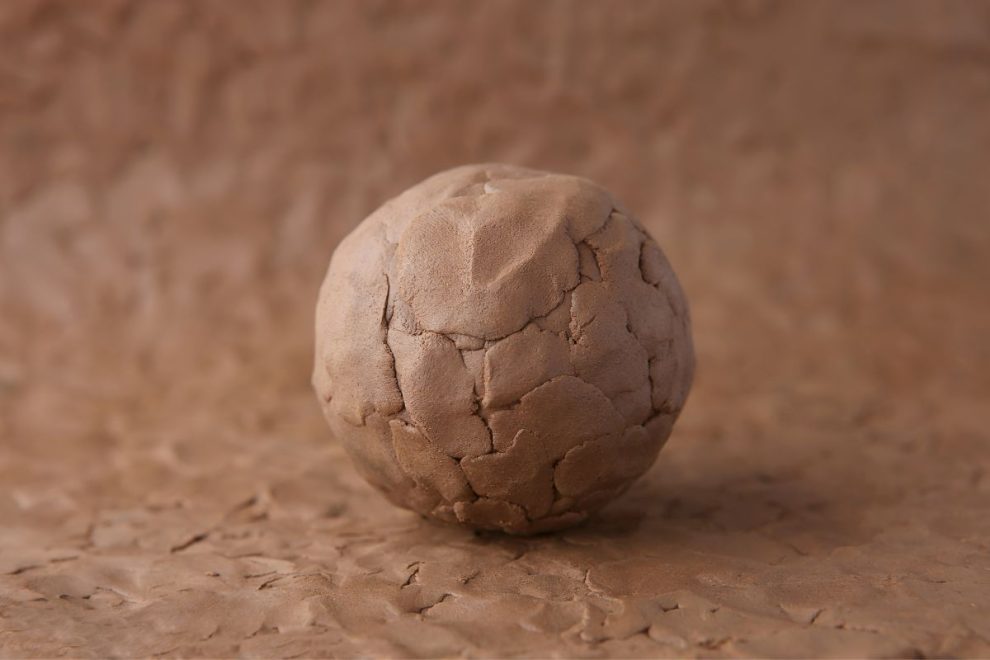
Making Greek Pottery: Methods and Innovations
The making of Greek pottery showed great skill and smart ideas. People used the potter’s wheel to make pottery faster and with more care. The firing process helped them get strong colors, with black and red standing out on every piece. People did not just focus on how to use these items, but also wanted them to look nice. Over time, black slip styles and strong shapes became better and better. By mixing the method with creative work, old potters left behind ideas that still help people making pottery now.
Clay Selection and Preparation
The heart of ancient Greek pottery was the clay people used to make it. The choice of clay was not random. Instead, it was a serious process. Potters picked clay based on the area they lived in. For example, Attic clay was known for its high iron content. This is what gave the red-orange look to many items. This color was very important for vase painting. Before using the clay, potters had to make sure it was just right. They removed anything not needed from the clay. This helped make the clay smooth.
Sometimes, they put seashell bits in the clay too. Doing this changed the color of the clay after it was fired. This let them give each piece a finish that showed where it was from. Carefully picked and cleaned clays were the start for every pot. They were the base for making shapes, then for adding art and baking the pieces. These steps made pottery that still lasts. Now, we can see these works of ancient Greek pottery in museums.
Throwing, Shaping, and Firing Processes
Making Greek pots was not easy and needed a lot of skill. Artisans used the potter’s wheel to shape the pots. They would to make detailed designs such as amphorae and kylix. The makers attached smaller parts like handles to the pots using slip. After this, the pots went through the important firing process in kilns. First, the artisans put on a black slip. This helped to make strong contrasts with clear horizontal lines and detailed pictures. The famous red and black look of the black-figure pottery came from this process. Every step was a challenge, mainly during the cooling time. The designs stayed on the pot when it cooled. Through new ways and hard work, the potters got better at what they do. Today, their smart ideas and skills are still a big part of Greek pottery history.
Major Types of Ancient Greek Pottery Vessels
Greek vase shapes showed both purpose and beauty. The main types of Greek vases ranged from transport vessels to cups used for drinking. Each Greek vase was made for a reason. People in the ancient world used Greek vases for different things. Some were for mass storage, some for sharing drinks at parties, and some even for funerals. These Greek vase shapes also connect to Greek literature and different regional styles. The many looks and uses of these vases help us understand the ways of life, beliefs, and ideas of people in the ancient world. Keep reading to find out more about well-known examples like amphorae and kraters.
and Storage Jars
| Vessel Type | Key Features |
| Amphora | Two vertical handles, used for transport. |
| Belly Amphora | Rounded base to maximize storage space. |
| Neck Amphora | Extended neck for better pouring control. |
Amphorae were very useful and served as main transport vessels for items like wine and oils. The vertical handles on these jars made it easy to hold them. Their wide shapes helped them store a lot. Some types, like the Nolan Amphora, show how design changed in different regional styles. These vessels were important in Greek pottery history. Their shapes and looks made them last a long time. This is because they mixed use, beauty, and meaning in Greek pottery.
Kraters and Mixing Bowls
The krater stood out as a main piece in ritual occasions like the Greek symposium. It had horizontal handles that made it easy to carry or use. The wide mouth was made for mixing wine and water. There were a few types of kraters. Bell kraters had a curved shape. Volute kraters had fancy handles. Both types mixed use with nice looks. In vase painting, kraters often showed stories from myths or festive scenes. Greek vase painting shows how important these were in Greek society. The Greek vase, with its form and design, became a key part of these times.
Kylix, Kantharos, and Drinking Cups
Vessels such as the kylix are easy to spot because they are flat and have two horizontal handles on the sides. There are other drinking cups, like the kantharos, that have long handles which go up over the edge of the cup. You could see these shapes often at a Greek symposium. The painted cups would help make parties feel more fun. The artists and master potters who made these cups liked having so many different types of kylix to work with. They used them as small spaces to show their art. These cups were useful, but they also looked nice. They became very important in Greek society and showed how people would mix art and life in the ancient world.
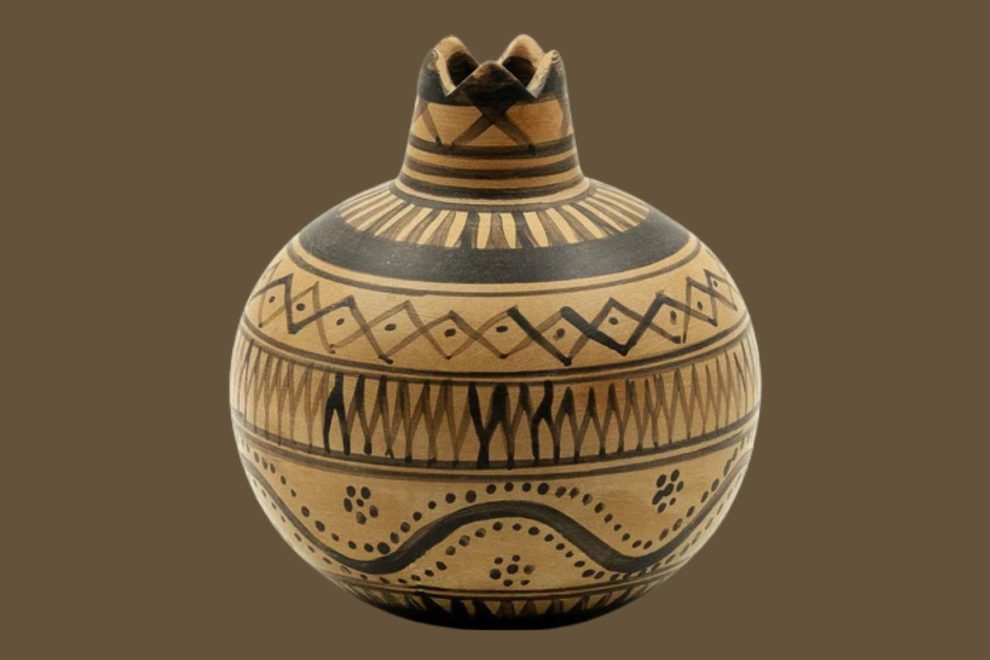
Decorative Styles Across the Ages
Decorative styles in ancient Greece went through big changes over time. In the geometric period, people used bold lines and made complex patterns with horizontal shapes. This time helped start the use of human figures in art. Later, artists used black-figure and red-figure styles. These methods let them show human figures and animal motifs in a clear way on different backgrounds. Pottery in ancient greek life was not just for looks. It was important for social and ritual occasions. These changes show the skill of the potters and painters in ancient greek history and how their work fit into their society.
Proto-Geometric and Geometric Styles
The proto-geometric and geometric styles mark important times in ancient Greek art. These styles show how vase painting in Greek art changed over time. You can see bold, horizontal lines and simple geometric patterns on the vases from this period. They set the stage for later, more detailed styles. The high iron content in the clay used by Greek potters gave each vase a unique look. It also helped them use the black slip technique. When Greek potters began to add human figures and animal motifs to their work, they made the stories on the vases richer and more interesting. This change was a big step forward in ancient Greek art.
Black-Figure Pottery Technique
The black-figure pottery technique stood out for its bold look and was common in ancient Greece from the 7th to 5th century BCE. In this way of vase painting, artists used clay with high iron content to make a slip. After the vase was fired, this slip turned into a deep black background, while the natural red color of the clay stayed on other parts. Vase painters would scratch through the black to reveal reddish lines, making pictures of human figures and animal motifs. This Greek vase painting style was not just about its beauty. It also played a big part in the story of Greek vase art, showing the ritual and cultural value of these Greek vases.
Red-Figure Pottery Technique
The red-figure pottery technique changed ancient Greek vase painting around the end of the 6th century BC. This way of making Greek vase made it possible for vase painters to show detailed human figures and scenes. They did this by painting the background with a black slip and leaving the human figures in the natural red color of the clay. It let artists share more about people and how they move and feel. Some well-known vase painters, like Euphronios, got very good at Greek vase painting. Their work made stories and looks in ancient Greek art even richer and more eye-catching than before. This method helped Greek art get to a new level.

Renowned Potters and Painters
Celebrated figures in ancient Greek pottery are known for their great skill and new ideas. Among these artists, Exekias became famous because he mastered the black-figure style. He could show detailed scenes and powerful stories. His skill in showing human figures and action is still important in Greek art today. Another well-known artist, Euphronios, changed the way people made red-figure pottery. He knew how to use light and dark spaces well. This made his story scenes much better. Both of these potters showed the highest level of vase painting in the ancient Greek world. They had a big effect on many other artists who came after them and helped to shape Greek vase painting and art for years.
Exekias and the Mastery of Black-Figure
Exekias is known as one of the best potters from ancient Greece. He changed Greek pottery in a big way with the black-figure style. Exekias stood out because he was able to tell stories in his art. His Greek vase painting mixed strong pictures with deep meaning. In his work, he liked to show human figures and used myth stories over and over. He made a deep black background on the Greek vase by using clay with a high iron content. This made the people and shapes stand out. Exekias was also known for his careful, sharp lines and the way his work was put together. Because of all this, he changed the way people saw Greek pottery. His way of doing Greek vase painting will always be remembered.
Euphronios and Red-Figure Innovations
Euphronios is one of the most famous people in ancient Greek art. He is known for his big impact on red-figure pottery. This new way of making Greek vase painting let artists show more details and be more exact when drawing human figures. Using fine brushes, Euphronios could make a Greek vase that looked real, with people shown in moving poses and with clear faces. You can really see his skill in works like the Krater. These pieces show both great art and good stories and help us see what Greek culture was like in that time. This is why Euphronios is so important in ancient Greek art and in the history of Greek vase painting.
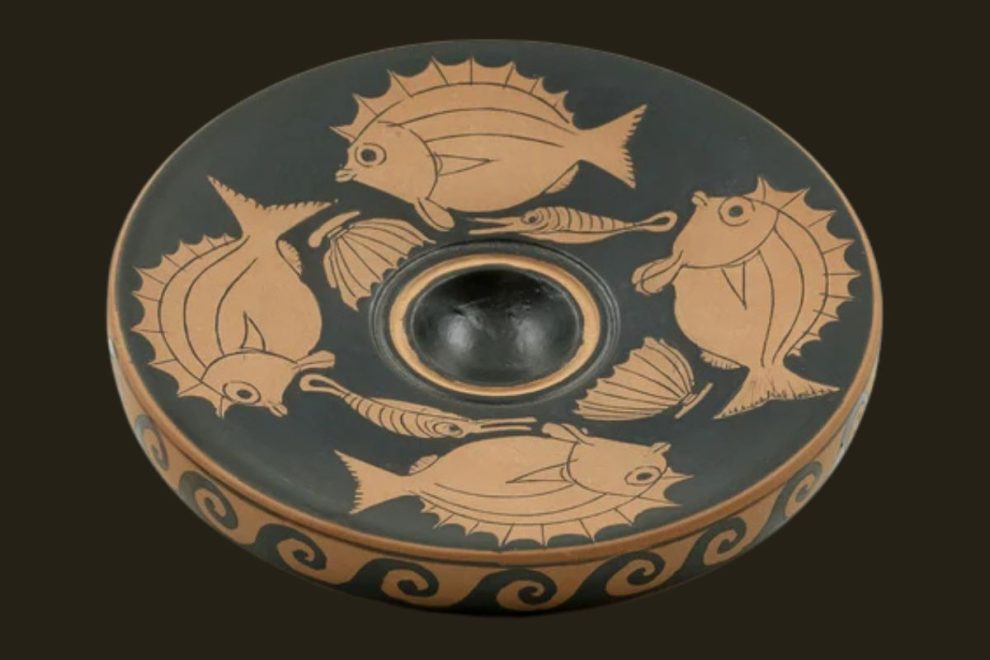
Notable Surviving Pieces and Their Stories
Looking at ancient Greek pottery, you can see there are some amazing vessels that help tell what life was like back then. The Dipylon Amphora is one such piece. It was used as a grave marker and is covered with geometric patterns and figures. This shows the skill and care that went into making these items in ancient Greece. Another example is the François Vase. This vessel catches your eye with detailed pictures showing stories from myths. The vase is credited to the master potter Ergotimos and the painter Kleitias. Both these pieces of ancient Greek pottery show not just how artistic people were in their work, but also give us a look at the rituals and daily life of that time.
The Dipylon Amphora
The Dipylon Amphora is a key piece of ancient Greek art from the geometric period. This large Greek vase catches the eye with its detailed geometric patterns. People in ancient Greece used it as a grave marker, which shows its role in ceremonies. The amphora is easy to spot because of its bold horizontal lines and animal motifs. These features come from the high iron content in the clay. The Dipylon Amphora shows how Greek vase painting grew during this time. Looking at it, you can see how different regional styles developed and shaped the pottery of ancient Greece. It is a good example of ancient Greek art and the changes that happened in Greek vase painting.
The François Vase
The François vase is a standout piece from ancient Greece. It shows the great skill of vase painters from that time. This Greek vase is just over two feet tall. It is covered with more than 270 human figures and many animal motifs. The scenes on the vase show stories from ancient Greek mythology and daily life too. The vase also features bold lines and geometric patterns. These details show the potter’s wheel work and new ideas in ancient Greek art from that time. The François vase was found in 1900 in an Etruscan tomb. It is still seen as one of the most important examples of ancient Greek art. Today, its beauty and detail continue to interest people, historians, and all those who love Greek art.

